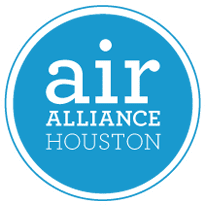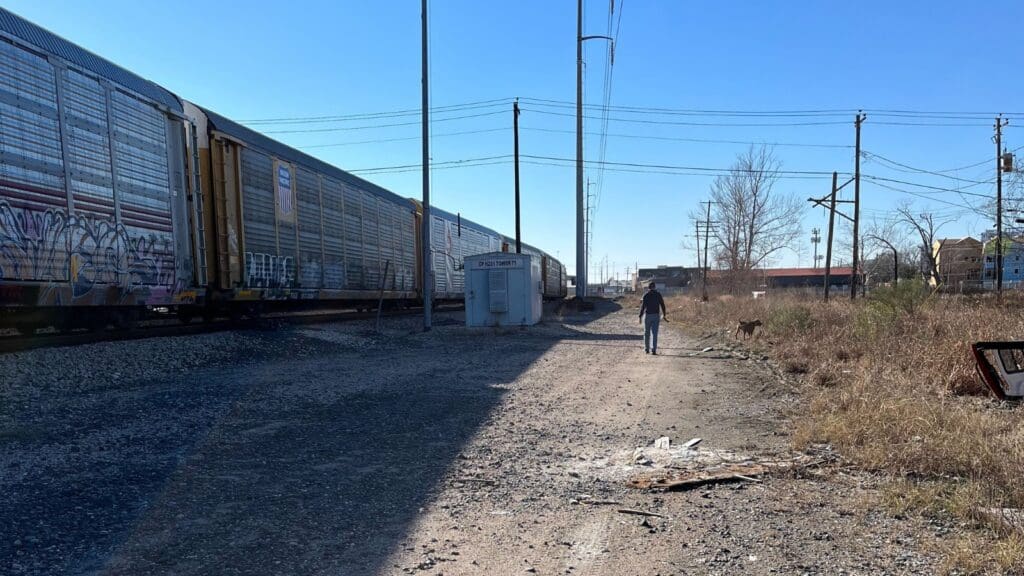The Ohio train derailment, an EIS, and the other signals that we’ve ignored
Blog by Jennifer Hadayia, Executive Director, Air Alliance Houston
Some have called the East Palestine train derailment disaster “Chernobyl 2.0”
— Stuart A. Thompson, for the New York Times
The derailment and subsequent burning of toxic chemicals is certainly one of the worst environmental and human disasters to occur in recent memory in the U.S. Officials have announced there is no longer an exposure level of concern, but the community of East Palestine will never be the same. The trains will still clack by, carrying toxic chemicals, forcing residents to either choose to relive this by memory and await the next disaster or uproot their entire lives in search of safety. This isn’t the first time an accident involving toxic chemicals has or will occur in our freight rail system.
An accident of this scale involving toxins known to be dangerous to human and environmental health could happen literally anywhere our freight rail system goes; including in the three blocks from my home.
The abundance of trains shipping toxic and hazardous substances across the country clearly pose a serious threat to public safety and the environment.
— David Masur and Kimberly Ong, for The Inquirer
Last fall, Air Alliance Houston joined with partners to raise community awareness of a proposed merger of Canada Pacific and Kansas City Southern that would allow even more trains to pass through Houston. As part of the companies’ merger plan to its oversight body, Surface Transportation Board, an Environmental Impact Statement (EIS) was developed to itemize the impacts of the project on human and environmental health and options for mitigation. Impacted Communities were encouraged to submit comments and concerns on the EIS. One of the many concerns raised was about the increased risk for hazardous material spillage due to accidents like a derailment or even just poor environmental controls.
On January 27, just days before the Ohio disaster, the Surface Transportation Board released the Final EIS for the proposed merger. Some of our concerns were addressed; many were not. Most encouraging was the Board’s acknowledgement that Houstonians had been virtually shut out from opportunities to provide input on the merger. The final EIS commits to changing this going forward. However, the accident mitigation measures, the emissions mitigation measures, and the plans for community education and outreach in the final EIS are still woefully inadequate. We are told there will be a final decision on the merger in the next few months. As they deliberate, we call on the Board and the rail companies themselves to truly heed the lessons from East Palestine.
Living three blocks from a multi-track train yard in Near Northside, I see and hear trains all day long. My partner and I walk our dog near the tracks everyday, where he can explore the tall grasses and smells all around. While he does, the trains rumble, clack, and blow horns as they go by, passing our family walk.
My thoughts continue to alight upon East Palestine, OH and on my hope that environmental decision-making at all levels, especially what is allowed to be transported by rail, where, and with what protections in place, will truly prioritize people over industry.
Air Alliance Houston is supporting the recovery efforts in East Palestine, and we hope you will join us, because everyone has a right to breathe clean air. Below are some credible resources.
Ohio train derailment disaster: Connect with local groups
If you are concerned about the massive vinyl chloride train derailment near the Ohio/Pennsylvania border that occurred in February 2023, grassroots groups responding to the disaster in the region you may want to connect with include:
Clean Air Council direct relief fund. They just deployed a team to Ohio today with PPE and supplies.
People can also donate to this gofundme to support derailment relief in PA.

